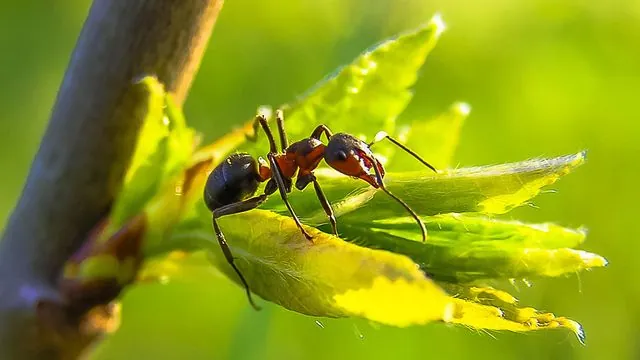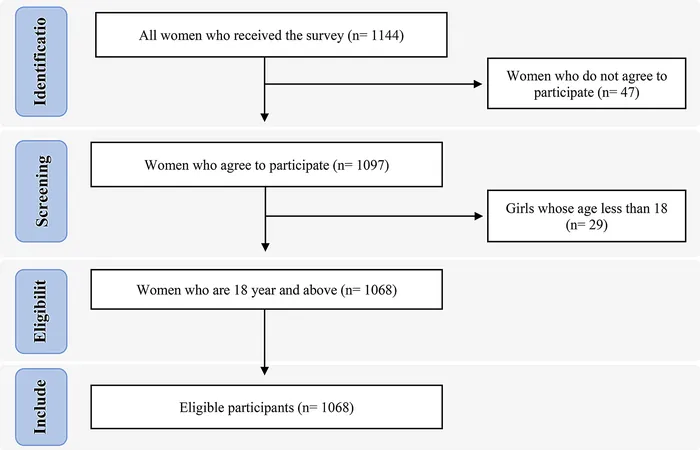
Groundbreaking Discovery: How a Hormone Shapes Ant Castes and Evolution!
2024-11-25
Author: Li
Groundbreaking Discovery: How a Hormone Shapes Ant Castes and Evolution!
In an exciting revelation, scientists at the University of Copenhagen have uncovered the pivotal role of a specific hormone in regulating caste differentiation among ants. The study, titled "Juvenile hormone as a key regulator for asymmetric caste differentiation in ants," highlights significant organ-level developmental changes and transcriptome analyses, offering new insights into the evolutionary biology of these fascinating social insects. Published in the Proceedings of the National Academy of Sciences (PNAS) on November 4th, 2024, this research marks a significant advancement in our understanding of ant physiology.
Caste Differentiation in Ants
Ants are primarily characterized by two distinct adult castes: queens, whose primary role is reproduction, and workers, who engage in tasks such as foraging, defense, and brood care. Queen ants typically exhibit physical traits such as larger body mass, wings, and pronounced reproductive organs, while workers are smaller, wingless, and possess regressed reproductive capabilities. These differences have intrigued researchers for decades, particularly in how they parallel developmental processes in multicellular organisms.
Reversible Caste Development
Remarkably, the research team found that caste development in Pharaoh ants (Monomorium pharaonis) is surprisingly reversible despite initial determinations made at the embryonic stage. Lead author Ruyan Li explained that the team conducted experiments with 237 pharaoh ant larvae, administering controlled doses of juvenile hormone during the crucial 3rd larval instar phase. The results were astonishing; the hormone-treated workers exhibited traits akin to gynes, including increased body size, additional frontal eyes, and even the development of wings and flight muscles.
Hormonal Influence on Reproductive Capability
While the treated workers mirrored certain physical characteristics of queens, they did not develop ovaries, which are essential for reproductive capability. This suggests a specific window of sensitivity to juvenile hormone that does not overlap with the egg stage, highlighting the intricate balance of hormonal influences in caste differentiation.
Evolutionary Implications of Hormonal Shifts
Furthermore, the findings raise intriguing questions about how shifts in growth hormone sensitivity may have contributed to the evolution of new castes in ants. This could lead to the emergence of novel castes, such as soldiers or permanently wingless gynes, which marry traits from both workers and queens. "Such novel castes often manifest as mosaic phenotypes, where traits from both castes are recombined, potentially solidifying when natural selection favors a subsequent hormonal shift," noted Guojie Zhang, a professor involved in the study.
Comparisons to Cellular Differentiation
Professor Koos Boomsma, a senior coauthor, emphasized the striking similarities between cellular differentiation in animals and caste differentiation in ant colonies. He pointed out that, similar to the challenges faced by animal breeders, researchers faced constraints in manipulating caste identities at the colonial level.
Conclusion
This groundbreaking research not only deepens our understanding of social insect biology but also opens avenues for future studies in evolutionary development. How might these findings reshape our understanding of other social insects? As scientists continue to explore the complexities of ant societies, one thing is clear: the hidden worlds of hormones and their transformative power on castes are just beginning to be unveiled!

 Brasil (PT)
Brasil (PT)
 Canada (EN)
Canada (EN)
 Chile (ES)
Chile (ES)
 España (ES)
España (ES)
 France (FR)
France (FR)
 Hong Kong (EN)
Hong Kong (EN)
 Italia (IT)
Italia (IT)
 日本 (JA)
日本 (JA)
 Magyarország (HU)
Magyarország (HU)
 Norge (NO)
Norge (NO)
 Polska (PL)
Polska (PL)
 Schweiz (DE)
Schweiz (DE)
 Singapore (EN)
Singapore (EN)
 Sverige (SV)
Sverige (SV)
 Suomi (FI)
Suomi (FI)
 Türkiye (TR)
Türkiye (TR)